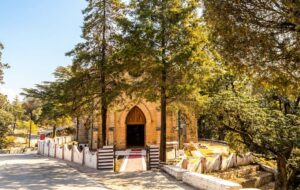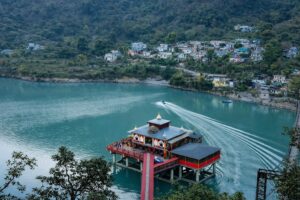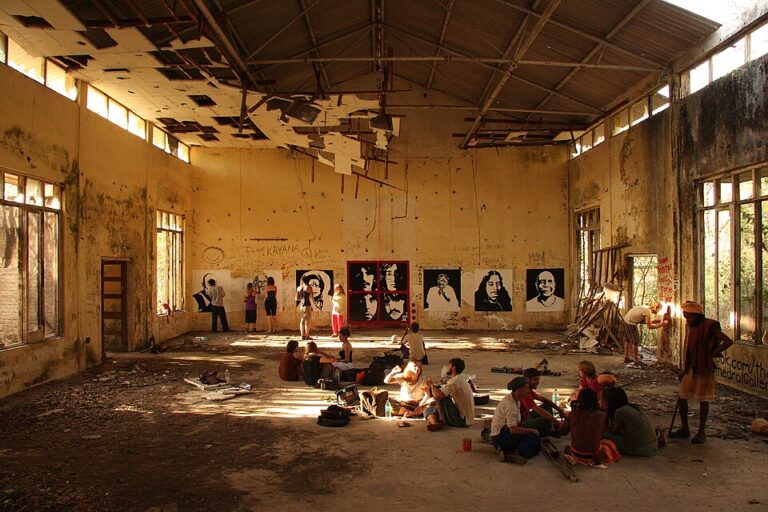Discover Top 10 Things To Do In Ayodhya Uttar Pradesh India
Explore the historical & spiritual center of Ayodhya, birthplace of Shree Ram. Discover its countless temples, historic structures from the Nawabi era, and serene Ghats along the sacred River Sarayu. While visiting temples is a must, Ayodhya offers more. Immerse yourself in the spiritual ambiance, celebrate various festivals, and indulge in these top things to do in Ayodhya during your trip.
These places hold immense religious and historical significance for Hindus, and pilgrims from all over the world visit Ayodhya to pay their respects and seek blessings at these sacred sites. The Ram Janmabhoomi complex is especially important as it is a birthplace of Shree Rama, a revered god in Hinduism.
Visiting Ayodhya is a spiritual and cultural journey that offers a wide range of experiences. Here’s a recap of the top things to do in Ayodhya:
The city of Ayodhya is indeed a significant pilgrimage site for Hindus, and the Ram Janmabhoomi complex in Ramkot is one of the most sacred places for devotees. Here’s some expanded information about the major pilgrimage sites within the Ram Janmabhoomi complex:
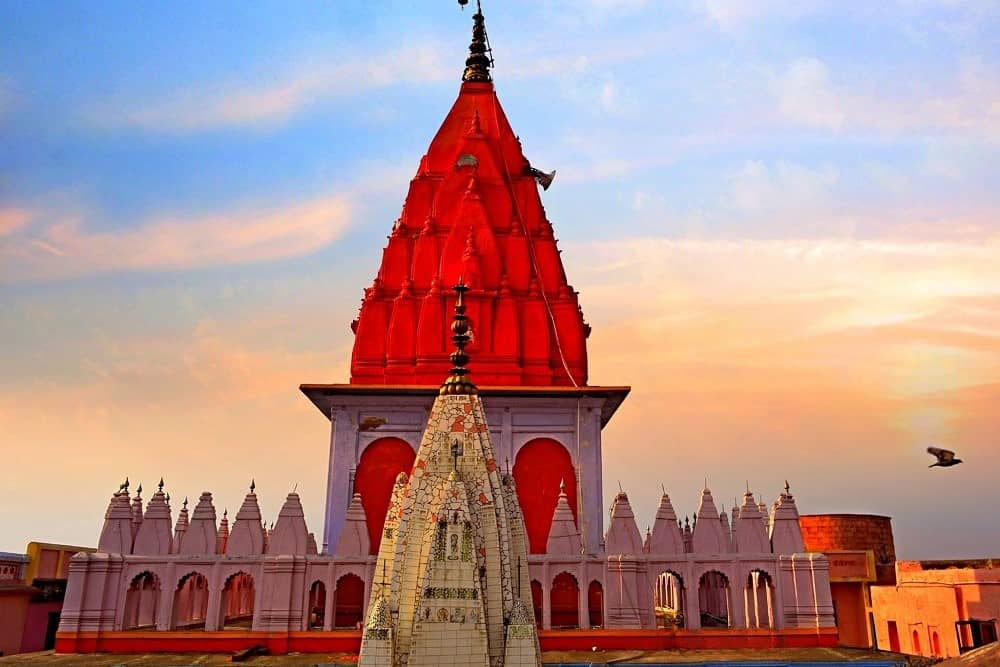
Ram Janmabhoomi:
This hallowed site is believed to be the exact location of Lord Rama’s birth. It stands as the central and most revered place in Ayodhya, drawing pilgrims from far and wide to pay homage to the revered deity.
Kaikeyi Bhawan:
Steeped in myth and history, Kaikeyi Bhawan is the chamber associated with Queen Kaikai, the stepmother of Lord Rama. It is traditionally believed to be the very place where Rama’s younger brother, Bharat, came into the world.

Kaushalya Bhawan:
Enshrining maternal love, Kaushalya Bhawan is intimately connected to Queen Kaushalya, who was not only Lord Rama’s mother but also the embodiment of maternal care and devotion.
Sumitra Bhawan:
This sacred abode pays tribute to Sumitra, yet another stepmother of Rama, and the mother of his valiant brothers, Laxman and Shatrughan. It holds a special place in the hearts of devotees who revere the bonds of family and duty.
Angad Tila:
Angad Tila is a place of devotion dedicated to Angad, a revered pilgrim and a prominent character in the epic Ramayana. As a Vanara (monkey warrior), Angad played a heroic and vital role in Lord Rama’s epic journey to rescue Sita, serving as a symbol of unwavering loyalty and courage in the face of adversity.
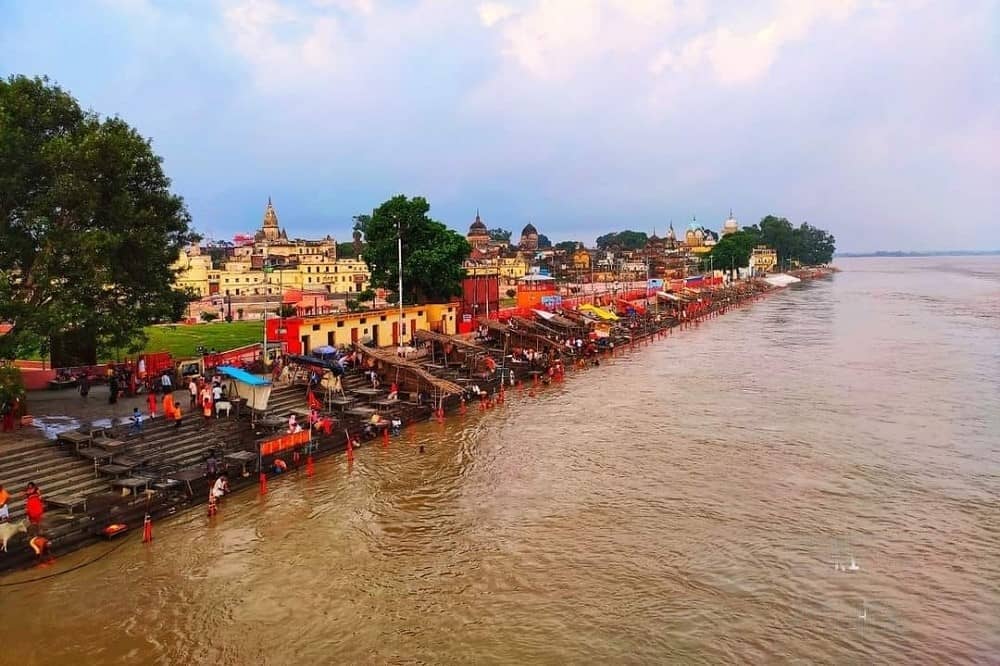
Lov Kush Temple:
This splendid temple is a devoted homage to Lord Rama’s sons, Luv and Kush. Their birth to Sita during her exile is a significant episode in the Ramayana. Luv and Kush, symbolizing righteousness and valor, hold a special place in the hearts of devotees and are celebrated for their noble lineage.

Hanuman Temple (Hanuman Garhi):
This renowned temple, known as Hanuman Garhi, is dedicated to Lord Hanuman, the devoted disciple of Lord Rama and a central character in the Ramayana. Hanuman is venerated for his unwavering devotion and boundless loyalty to Shree Rama. The temple stands as a testament to his unwavering commitment and is a place of profound reverence for Hanuman devotees.
Rang Mahal (Royal Entertainment Room):
Rang Mahal, also known as the Royal Entertainment Room, is steeped in the vibrant history of Lord Rama and his family’s royal activities and entertainment. It serves as a window into the opulent lifestyle and cultural richness of the era, offering a glimpse of the grandeur and merriment that once graced the lives of the royal family during Lord Rama’s reign.
.
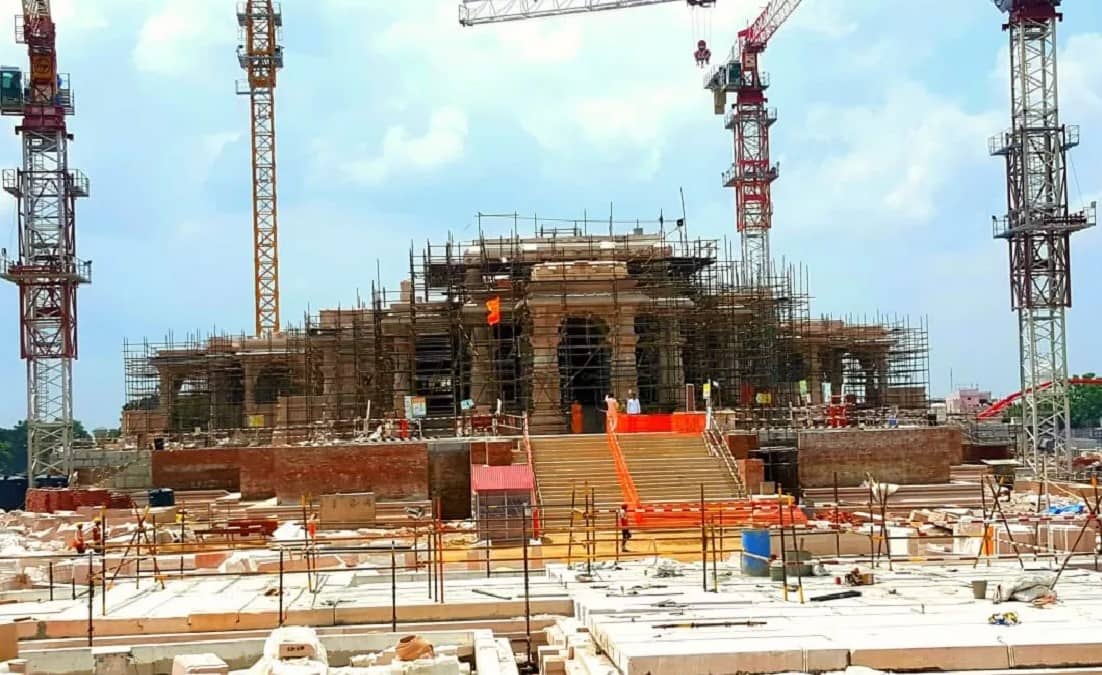
Explore Sita ki Rasoi:
Visit the temple that was once the royal kitchen of Goddess Sita during the Ramayan era. You can see a model version of the ancient kitchen and enjoy the serene atmosphere. The temple also serves free food to the poor, continuing the tradition of Goddess Sita.
Tulsi Smarak Bhawan Museum:
This museum dedicates to famous poet-saint Goswami Tulsidas Ji and houses a collection of artifacts and literature from the time of Lord Ram. Don’t miss the cultural performances and the library within the Bhawan.
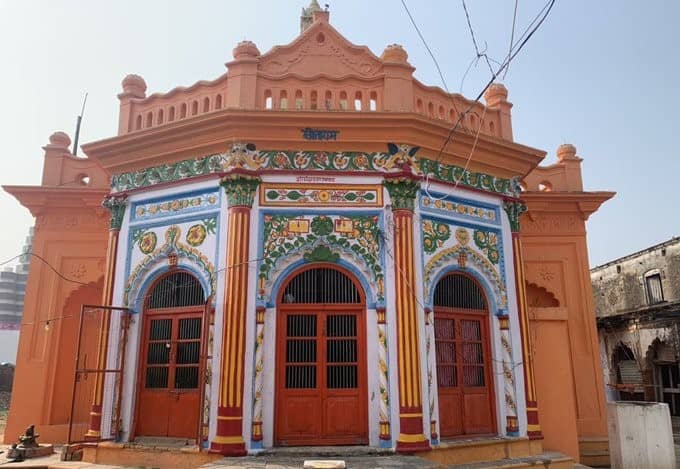
Ramkatha Park:
Ramkatha Park provides a peaceful space for cultural activities. Enjoy devotional prayer meetings, cultural performances, poetry, storytelling, and more during festivals. It’s also a great place for children to play and for adults to relax.
Visit Raja Mandir by the River:
Explore Raja Mandir, a temple associated with Lord Ram and other deities. This temple showcases exquisite Hindu architecture and is located by the river, offering a tranquil setting for your visit.

See the Famous Mani Parbat:
Discover the significance of Mani Parbat, a sacred hillock believed to have fallen from a mountain carried by Lord Hanuman during the Ramayan era. Explore the shrines and Buddhist Monastery on this 65-ft high hill.
A Walk in Moti Mahal:
While not in Ayodhya itself but in the nearby district of Faizabad, Moti Mahal is a stunning example of Mughal architecture. Visit this historical palace, which was once the residence of Nawab Suja-Ud-Daula’s wife, Begum Unmatuzzohra Banu.
Pray in the Caves of Choti Chawni:
Explore the Choti Chawni, a magnificent structure crafted from white marble. The structure features 34 heritage caves, showcasing both Buddhist and Hindu influences. The Kailash Temple within adds to the serenity of the place.
Bahu Begum Ka Maqbara:
Visit the tomb of Begum Unmatuzzohra Bano, the wife of Nawab Suja-ud-Daula. This tall building boasts magnificent architectural design and offers a panoramic view of the city from the top.
t Ram ki Paidi Ghat:
Take a boat ride along the sacred River Sarayu and witness the beautiful ghats and temples along the riverbanks. The aarti ceremonies during sunrise and sunset are particularly enchanting. You can also cleanse yourself by taking a dip in the holy waters.
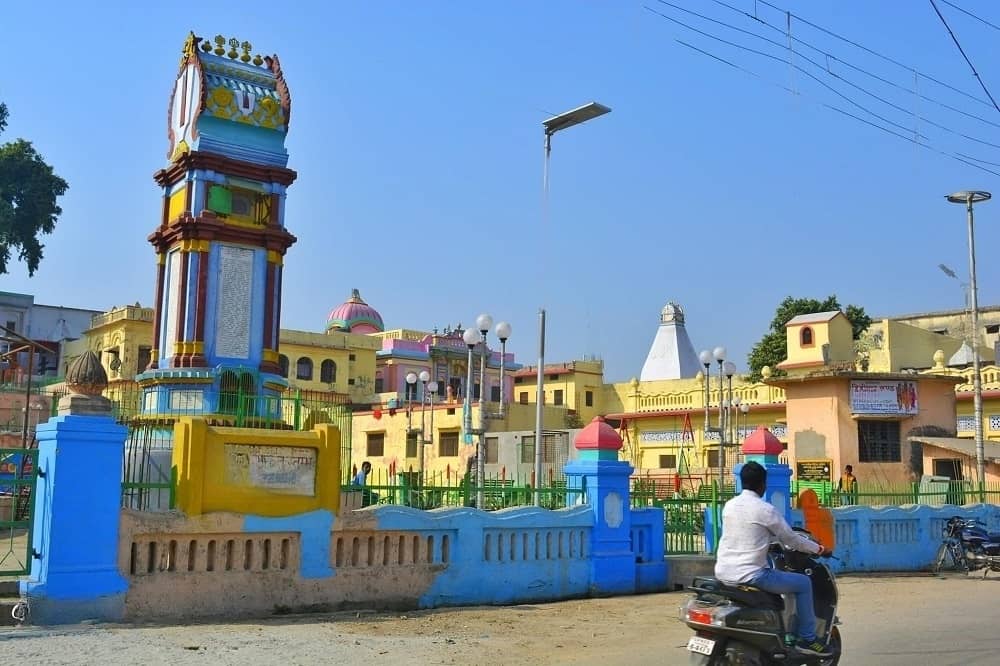
Visit Temples on the Ghat:
Explore Guptar Ghat in Faizabad, a few kilometers from Ayodhya, and visit the Chakra Harji Vishnu Temple. This temple is famous for its footprints believed to be those of Lord Ram. It’s a popular pilgrimage spot with a rich mythological history.
Evening Arti & Boat Ride:
For a truly immersive experience, take a boat ride along the holy River Sarayu, witnessing the beauty of the Ghats and temples. The Aarti ceremonies during sunrise and sunset are moments of deep spiritual connection.
Panchmukhi Mahadev Mandir:
Our journey begins at the Panchmukhi Mahadev Mandir, an ancient temple believed to have been established by Lord Rama himself. Situated along the banks of the mystical Guptar Ghat, this sacred abode houses a five-faced Shiva idol at its core. As you explore the temple premises, you’ll encounter other sanctuaries dedicated to Lord Sitaram, Radhakrishna, and Hanuman, all resonating with divine energy.
Chakra Harji Vishnu Temple:
Just a stone’s throw away from Guptar Ghat lies the Chakra Harji Vishnu Temple. Here, you’ll discover a treasure trove of deities, including a meticulously carved idol of Lord Vishnu bearing his iconic chakra. The temple also holds the imprints believed to belong to Lord Rama, adding to its historical significance.
Valmiki Bhawan:
Immerse yourself in the timeless epic of the Ramayana at Valmiki Bhawan. The sage Valmiki, who penned this revered tale, is commemorated here with inscriptions adorning the marble walls. Devotees and tourists alike find solace in the verses that narrate Lord Rama’s extraordinary life and adventures.
Jain Shwetambar Temple:
Ayodhya embraces diverse faiths, and the Jain Shwetambar Temple stands as a testament to this inclusivity. This 200-year-old temple, dedicated to the first Tirthankara, Sri Adhishvar Bhagwan, is a pilgrimage site for both Jains and curious travelers. It’s said that five Tirthankaras were born in Ayodhya, each with their own dedicated temple.
Makhaura Dham:
Venture an hour’s drive from Ayodhya to the lesser-known yet historically significant Makhaura Dham. Here, Raja Dashratha performed the putreshti yajna, resulting in the birth of Lord Rama and his brothers. The area also hosts temples dedicated to Lord Ram and Janaki. Makhaura Dham is the starting point for the renowned Chaurasi Kos ki Yatra pilgrimage.
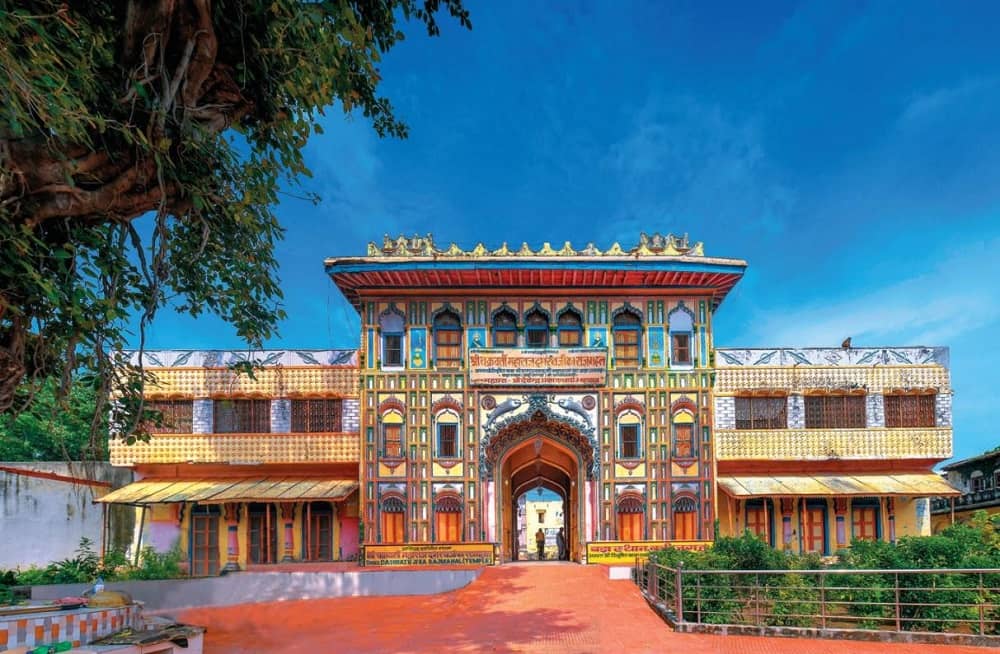
Dashrath Samadhi:
Pay your respects to Raja Dashrath, Lord Rama’s father, at Dashrath Samadhi. Located in Bilvaharighat, this site includes a temple and statues of Dashrath, Bharat, Shatrughan, and rishi Vashishtha. Plans for a future revamp promise an even more engaging experience for visitors.
Janaki Mahal:
For a divine stay in Ayodhya, look no further than Janaki Mahal. This temple’s history spans thousands of years and offers comfortable accommodation. The serene temple campus features a beautifully decorated statue of goddess Janaki Devi and hosts enchanting bhajans and aartis during festivals like Ramnavmi and Sita Vivah Mahotsav.
In conclusion,
Ayodhya offers a profound and diverse range of experiences for travelers on a spiritual and cultural journey. From the sacred kitchens of Sita ki Rasoi to the exquisite artifacts at the Tulsi Smarak Bhawan Museum, from the tranquil cultural shows at Ramkatha Park to the serenity of Raja Mandir by the river, Ayodhya is a city steeped in spirituality and history.
Don’t miss the chance to explore the sacred Mani Parbat, the stunning Mughal architecture of Moti Mahal in Faizabad, and the awe-inspiring caves of Choti Chawni. Bahu Begum ka Maqbara provides not only a glimpse into architectural grandeur but also a breathtaking view of the city.
And if you seek to deepen your pilgrimage, visit the temples on the Ghat, including the Chakra Harji Vishnu Temple at Guptar Ghat, where the footprints of Lord Ram are believed to be preserved.


